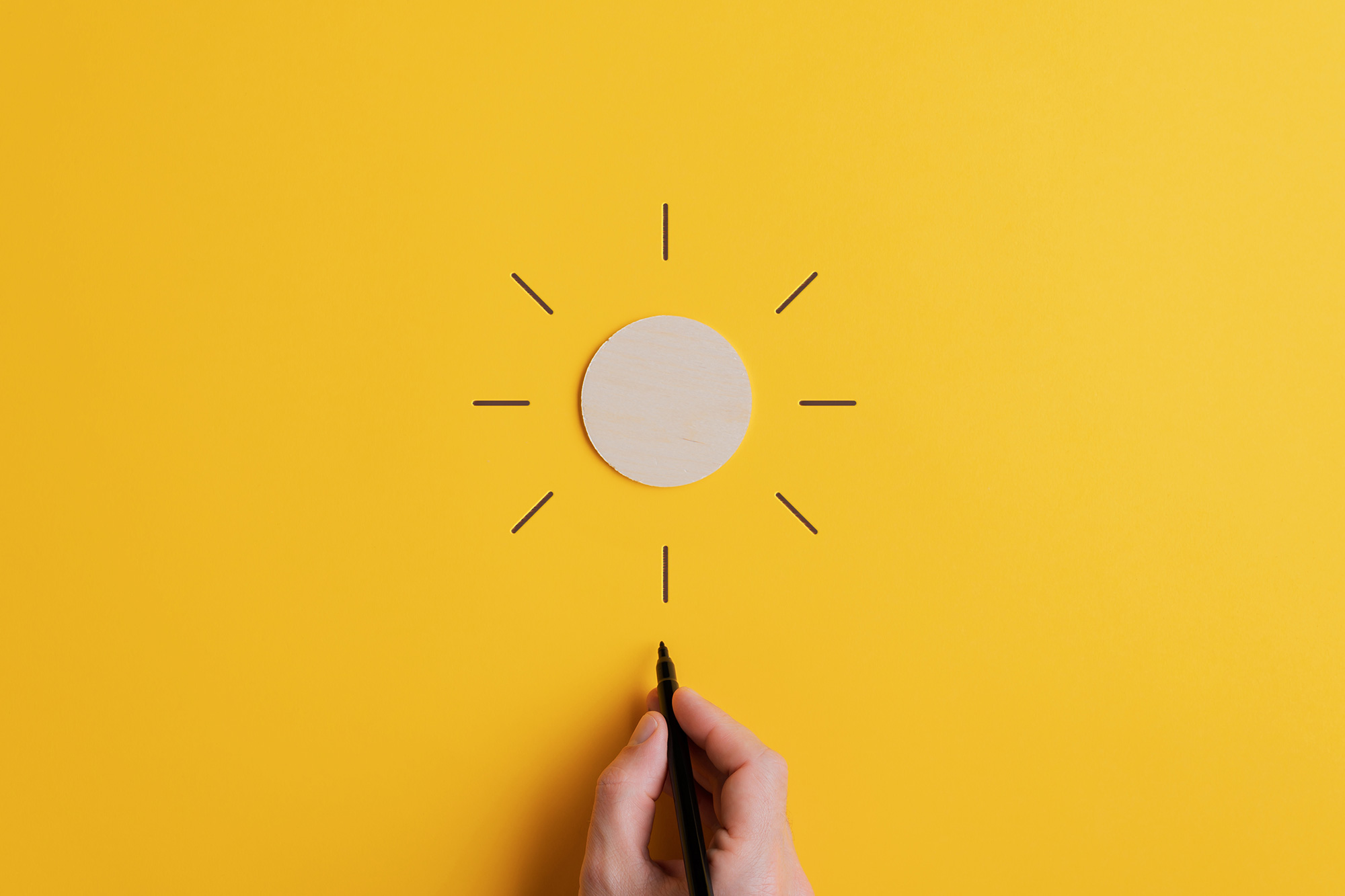It is not always that simple, to consider the answer to this age-old question. It’s almost as bad as ‘How long is a piece of string?’… So, before we get to the root of this question, let me share with you some different perspectives…The optimist says the glass is half full. The pessimist says the glass is half empty. The realist says the glass contains half the required amount of liquid for it to overflow. And the cynic… wonders who drank the other half.
Attitude is not about whether the glass is half full or half empty, it’s about who is paying for the next glass. The professional trainer does not care if the glass is half full or half empty, he just knows that starting the discussion will give him ten minutes to figure out why his PowerPoint presentation is not working.

The logician says that where the glass is in process of being filled, then it is half full; where it is in the process of being emptied, then it is half empty; and where its status to be filled or emptied is unknown, then the glass is one in which a boundary between liquid and gas lies exactly midway between the inside bottom and the upper rim, assuming that the glass has parallel sides and rests on a level surface, and where it does not, then the liquid/gas boundary lies exactly midway between the upper and lower equal halves of the available total volume of said glass.
The scientist says a guess based on a visual cue is inaccurate, so mark the glass at the bottom of the meniscus of the content, pour the content into a bigger glass; fill the empty glass with fresh content up to the mark; add the original content back in; if the combined content overflows the lip, the glass was more than half full; if it doesn’t reach the top, the glass was more than half empty; if it neither overflows nor fails to reach the top, then it was either half-full or half-empty. Now, what was the question again?
The grammarian says that while the terms half-full and half-empty are colloquially acceptable, the glass can technically be neither since both full and empty are absolute states and therefore are incapable of being halved or changed in any way.
The research scientist says that following initial observation and testing a working hypothesis for further research is: “The glass is both half full and half empty,” and that these findings warrant further investigation with a more representative sample of glasses and contents, which may or may not be liquid. The algebraic simultaneous equation theorist says that if the glass is equally half full and half empty, then half full = half empty; therefore, ½ x F = ½ x E; therefore (by multiplying both sides of the equation by 2) we show that F = E; i.e., Full equals Empty! The efficiency analyst says the glass is operating substantially below optimisation level, being consistently exactly 50% under-utilised during the period of assessment, corresponding to an over-resourcing in meeting demand equating to precisely 200% of requisite capacity in volume terms, not accounting for seasonal trends and shrinkage, and that if the situation continues there is in theory opportunity for savings or expansion.
The obsessive-compulsive postpones the question until the level is checked, and checked again, and again, and again… The phobic says “Gross! someone drank out of it and left their germs in the glass.” The psychiatrist would ask you, “Is the half-empty/half-full glass really that important? I mean… really? Think about it. In fact, let’s not. Let’s set that issue aside for a few moments and talk about what’s really bothering you.”
The salesperson will convince you that even though the glass is half full/empty you are getting more than your money’s worth compared to buying a full glass. The full glass is less expensive because of the economies of producing a common standard version in enormous quantities, whereas the more expensive half full/empty glass represents much better value because it is more exclusive and better quality, and scarce and sought after.
The customer service agent will agree with you that the glass is half full/empty, and he will do anything in his power to fill the glass up at no extra cost. However, after a full investigation, you will be informed that you mistakenly received a half full/empty glass since you only paid for a quarter. You therefore received a half full/empty glass at the price of a quarter-full/three-quarters empty glass. You should consider yourself very lucky, and that any further complaints might cause you having to return the half full/empty glass at your own cost, with no guarantee of any refund.
Schrödinger’s cat doesn’t want anyone to observe the glass to begin with. (‘Schrödinger’s cat’ refers to Austrian physicist Erwin Schrödinger’s 1935 paradoxical illustration of an aspect of quantum mechanics theory, basically in which a cat, representing something that can exist in different states, continues to exist in two possible states – i.e., alive, or dead – until one of its possible states is measured, which in the case of the cat results in its extinction. I am open to better concise interpretations of the Schrödinger’s cat theory.)
The opportunist says, “Thanks, folks! While you were debating it, I drank it.” The marketing professional convinces the buyer that what’s left is more valuable than the first half. The banker says: “I see an opportunity! Let’s put a couple of options on the full half and leverage it until it’s too big to fail, then sell a ton of it… Heck! While we are at it, let’s do the same to the empty half and sell that too!” The actor says, “Whatever the director wants it to be – or not to be…” The politician says that under the last government the glass was half-empty, and becoming emptier, but thanks to his own party’s new leadership, the glass is definitely now half-full, and becoming fuller; but if the other party were to return to power, the glass would once again undoubtedly empty rapidly.
The economist says let market forces decide. The call-center operator asks if you’d mind holding while they find out for you. (Your call is important to them…) The IT supports person asks if you’ve tried emptying the glass and then refilling it. The insomniac will be up all-night wrestling with the question. The existentialist wonders what is the point of the question. The nihilist breaks the glass. The monetarist believes that the glass will naturally tend to being full, and that to interfere with it would cause an inefficient use of the contents, with some possibly being spilled and wasted.
If you don’t like something, change it; if you can’t change it, change the way you think about it.
So, what do we learn here from all these different perspectives?
We all know the standard answers that supposedly determine whether we’re a pessimist or an optimist. But pessimism and optimism are both over-rated and unrealistic because they don’t see the whole picture. In fact, they ignore part of the picture. To the wise and perceptive, the glass is actually FULL. There is some water (which is obvious). The rest of the glass is filled with air. Just because you can’t see it doesn’t mean it’s not there. We need the air just as much as we need the water. Both are vital.
But how many times in your life have you judged yourself, another person or a situation based only on what you see? It happens every day, moment by moment, when we only use our senses.
So how often do you “see” or understand the whole picture?
The entire picture, or big-picture thinking, is critical to understanding what is possible in the present and in the future.
When you take the time to look at the big picture, it can cause a shift in perspective, change your judgment, and ultimately change your focus and activity, either as an individual, team, or entire organisation.
Getting a big picture perspective reinforces the things that are important and subsequently refocus your attention on what you determine to be true priorities.
When looking at the big picture, ask yourself the following three questions:
Why are things happening as they are?
What is really necessary?
How do the various things with which I’m involved in fit into the overall scheme of things?
When we consider these, we can attain the following three benefits of looking at the big picture:
It allows you to see opportunities for improvement.
It allows you to bring that big picture view to be visualised, as a road map for yourself, or to be communicated to the rest of the team or organisation.
It serves to reinforce the real reason for the activities you do.
So, when returning to the age-old question: Is the glass half full or half empty? And considering the Big Picture, by understanding the meaning of the phrase, you will motivate yourself and maybe even change your point of view.
So, can we change from either being an optimist or pessimist?
Optimism is a hopeful, positive outlook on the future, yourself, and the world around you. It is a key part of resilience, the inner strength that helps you get through tough times. Whilst being a pessimist instils a certain amount of realism, a grounding into reality, that dashes any allowances or the illusion of hope on a grand scale. You don’t have to be a “born optimist” to use the power of optimism. In daily life, or when faced with a crisis, you can choose a positive viewpoint to make the most of what life brings your way. Even if you focus on the negative side of things, “realistic optimism” can work for you.
With realistic optimism, you don’t just expect the best and hope that things will go well. Nor do you let yourself see and expect only the worst. Instead, you look at the “big picture,” the good and the bad. You then decide what is realistic to expect… Decide what you can do to make things go as well as possible… And choose to focus on the positives, and on your strengths, as you go forward.

